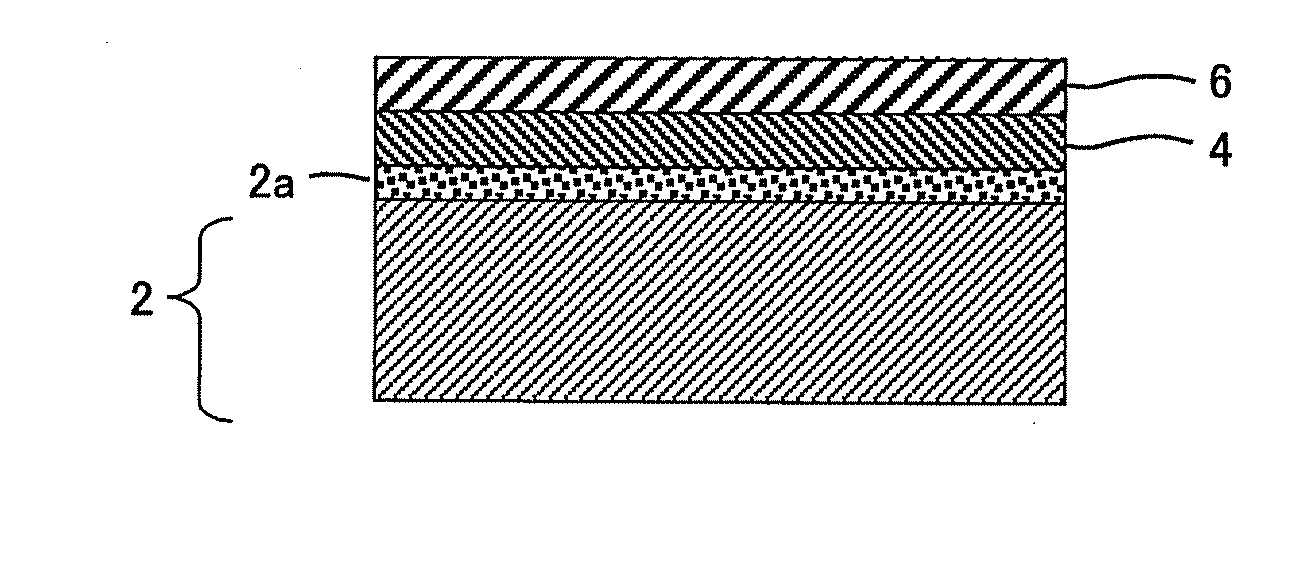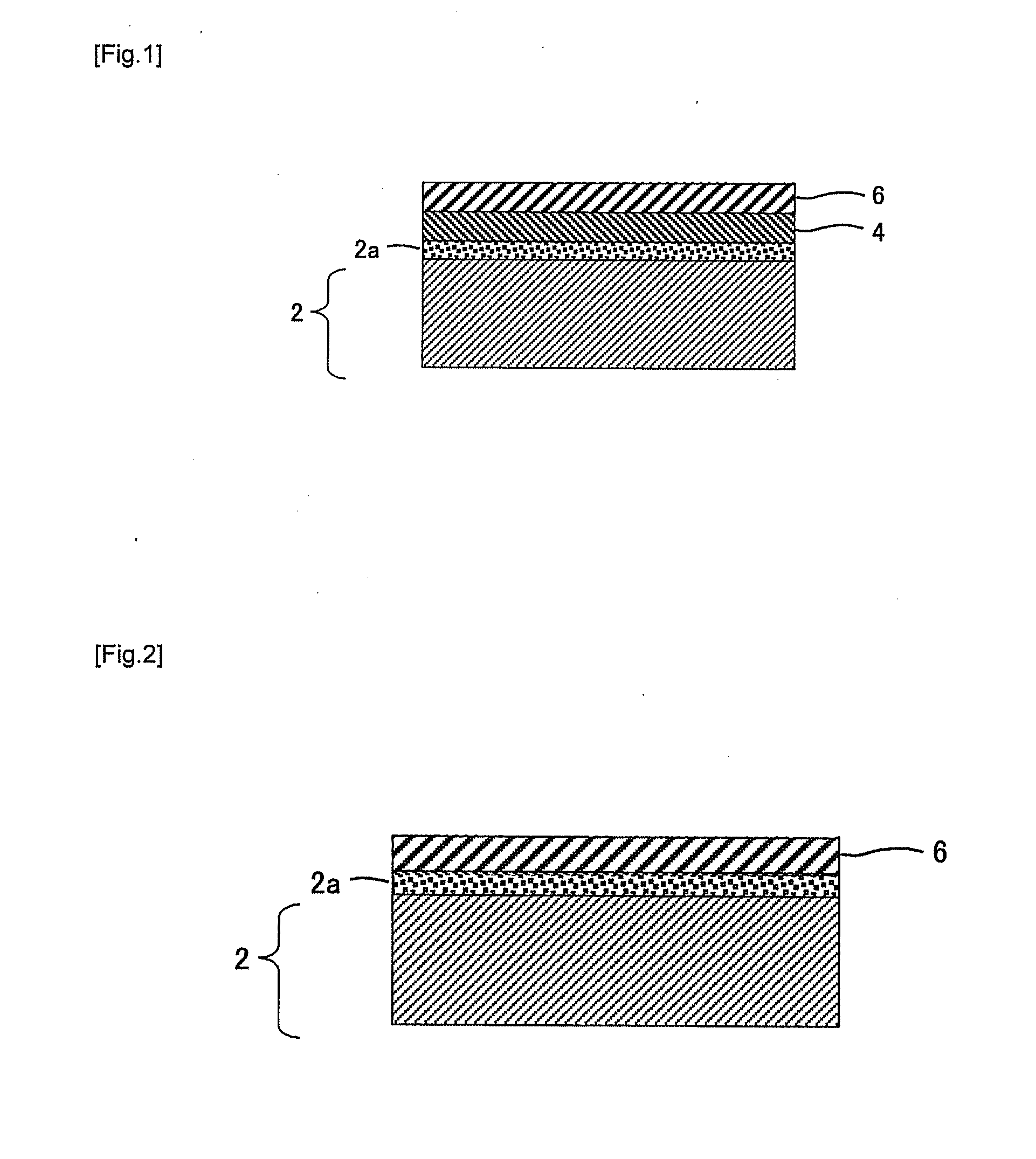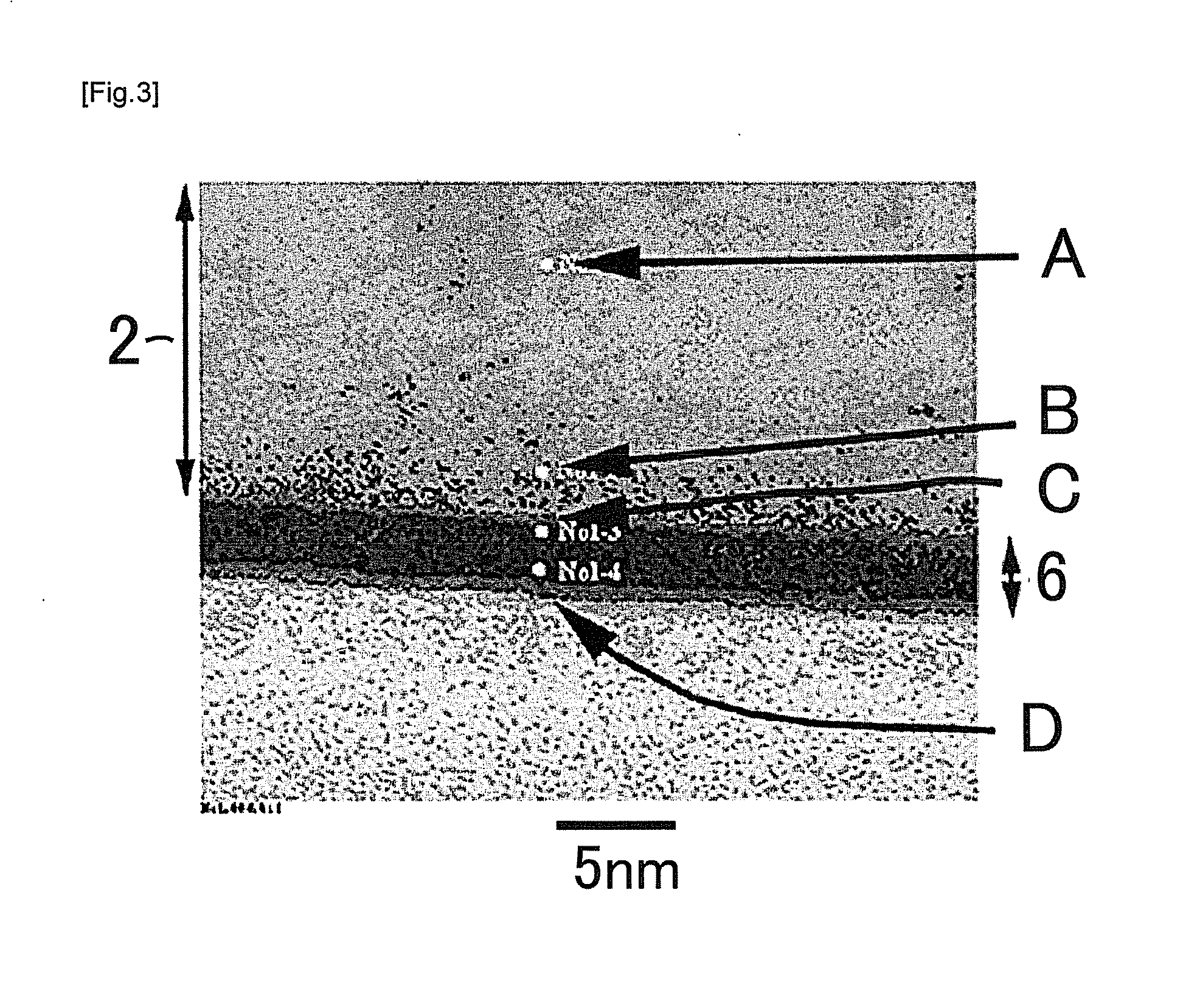Fuel cell separator material, fuel cell separator using same, and fuel cell stack
a technology of separator and separator material, which is applied in the direction of cell components, cell component details, electrochemical generators, etc., can solve the problems of high material cost and processing cost, undetected corrosion and elution at high temperature under oxidizing atmospher
- Summary
- Abstract
- Description
- Claims
- Application Information
AI Technical Summary
Benefits of technology
Problems solved by technology
Method used
Image
Examples
first embodiment
[0041]The fuel cell separator material according to a first embodiment of the present invention will be described below. As shown in FIG. 1, the fuel cell separator material according to the first embodiment comprises a metal layer 4 formed on a surface of a Ti base 2 via an intermediate layer 2a, and an alloy layer 6 formed on a surface of the metal layer 4. The metal layer 4 mainly comprises the above-mentioned metal (preferably the same as the first component of the intermediate layer).
[0042]The fuel cell separator material requires corrosion resistance and electrical conductivity, and the base requires corrosion resistance. So, a titanium material having good corrosion resistance is used as the base.
[0043]The Ti base may be solid titanium, or may be a material other than Ti having a Ti coating thereon with a thickness of 10 nm or more. Examples of the material other than Ti include stainless steel and aluminum. When Ti is coated on the surface of the material, lower corrosion re...
second embodiment
[0083]The fuel cell separator material according to a second embodiment of the present invention will be described below. As shown in FIG. 2, the fuel cell separator material according to the second embodiment comprises an intermediate layer 2a formed on a surface of a Ti base 2, and an alloy layer 6 formed on the intermediate layer 2a.
[0084]Since the Ti base 2 and the alloy layer 6 are the same as the first embodiment, a description is omitted. The fuel cell separator material according to the second embodiment is different from the first embodiment in that no metal layer 4 is formed, and has excellent corrosion resistance as compared with the first embodiment.
[0085]Also in the second embodiment, the concentration of O in the depth region of the alloy layer 6 having the Au concentration of 10% is preferably 30% by mass or less. The depth region of the alloy layer 6 having the Au concentration of 10% is a boundary between the intermediate layer 2a and the alloy layer 6. If the regi...
third embodiment
[0089]The fuel cell separator material according to a third embodiment of the present invention will be described below. As shown in FIG. 5, the fuel cell separator material according to the third embodiment comprises an alloy layer 6 formed on a surface of a Ti base 2 via an intermediate layer 2a, and an Au single layer 8 is formed on the surface of the alloy layer 6. Since the Ti base 2 and the alloy layer 6 are the same as the first embodiment, a description is omitted.
[0090]The Au single layer 8 can be formed appropriately by changing the sputter conditions (sputter time, output and the like).
[0091]Alternatively, the layer structures of the first and third embodiments may be combined to form a layer structure having the metal layer 4, the alloy layer 6 and the Au single layer 8 in order via the intermediate layer 2a on the surface of the Ti base 2.
[0092]According to the fuel cell separator material embodiments of the present invention, the Au (alloy) layer can be formed on the T...
PUM
| Property | Measurement | Unit |
|---|---|---|
| Percent by mass | aaaaa | aaaaa |
| Percent by mass | aaaaa | aaaaa |
| Percent by mass | aaaaa | aaaaa |
Abstract
Description
Claims
Application Information
 Login to View More
Login to View More - R&D
- Intellectual Property
- Life Sciences
- Materials
- Tech Scout
- Unparalleled Data Quality
- Higher Quality Content
- 60% Fewer Hallucinations
Browse by: Latest US Patents, China's latest patents, Technical Efficacy Thesaurus, Application Domain, Technology Topic, Popular Technical Reports.
© 2025 PatSnap. All rights reserved.Legal|Privacy policy|Modern Slavery Act Transparency Statement|Sitemap|About US| Contact US: help@patsnap.com



